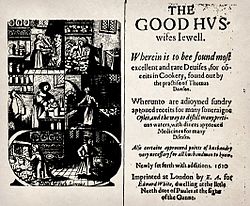It’s medlar (aka openarse) season at the moment, and I thought I would try the recipe I mentioned in the medlar post from last year.
There’s quite little to go on with medlar preparation in books and the internet as people don’t really eat or cook with them these days, beyond medlar jelly, so every year, I learn a little more about eating and cooking them.
This year I have been more patient and waited for them to get fully-bletted. Medlars are a strange fruit in that they cannot be eaten until they have gone very dark, ripe and soft, a process called bletting. Any other fruit would be thrown away in this state, but medlars are unique because they go from sour and astringent to a tart, soft date-like fruit. They can be sliced in two and the soft flesh can be squeezed or spooned out. Within there are 5 large seeds, so you have watch out for them.
This medlar tart recipe comes from the 1597 book The Good Housewife’s Jewel by Thomas Dawson. It is a very simple paste made from medlar pulp, cinnamon, ginger and sugar baked in a pastry case. Here’s the recipe as it appears in the book:
Take medlars that be rotten and stamp them. Then set them on a chafing dish with coals, and beat in two yolks of eggs, boiling till it be somewhat thick. Then season them with sugar, cinnamon and ginger and lay it in the paste.
Back in Tudor times (Elizabeth I was on the throne when the book was published), sugar was not always as refined as today, so to replicate this I used soft light brown sugar. I decided to use rough-puff pastry as my ‘paste’, as it was often used for the more delicate desserts and posh pies. I changed the method slightly and instead of thickening the medlar mixture in a pan, as you would for pouring custard, I put the uncooked mixture into the case and baked it in the oven.
I did have a look for other recipes and found that things like butter, nutmeg, candied fruit or citron, sweet cider and musk powder (that final one might be a little tricky to source) were all added merrily.
This tart is very good indeed, evocative of the American pumpkin pie. I would certainly give it a go should you happen upon a medlar tree.
For the tart:
Blind-baked shallow 8-inch pastry case
750 g well-bletted medlars
75 g caster or soft light brown sugar
3 egg yolks
1 tsp each ground cinnamon and ginger
Cut the medlars and twist in half widthways, as you might do with an avocado (except there are 5 pips rather than one large one). Scoop or squeeze the soft flesh into a bowl, removing pips as you go. I tried to pass the squeezed flesh through a sieve, which was a little tricky and boring but realised quite quickly that I wasn’t patient enough and decided instead that the flesh was smooth enough straight from the fruit.
Beat in the remaining ingredients and spread the mixture over the pastry case and bake for 20 minutes at 175°C.
Eat warm with thick cream.
If you like the blogs and podcast I produce, please consider treating me to a virtual coffee or pint, or even a £3 monthly subscription: follow this link for more information.




Fantastic post! I’m in Spain at present and was looking at quinces on sale in the market today. Quince, as I’m sure you know and appreciate was extremely popular in Elizabethan England, at the same time as the medlar.
LikeLike
Ah yes. I love quince! I made some quince and medlar jelly this year too
LikeLike
Oh, yay! I just saw medlars for the first time here in the Boston (Massachusetts) area. Being unfamiliar with them, I didn’t know whether they were ripe or rotten. Now I have not only the information that I need but also a recipe–and a clue to look at very old recipes.
Thank you!
LikeLike
Glad I can be of some help Jean. Let me know how you get on!
LikeLike
This is my favorite food blog! I’ve been reading your blog for a couple years and thought it appropriate to say thanks for posting all your interesting information about food and history. Best wishes regarding your restaurant too!
LikeLike
Wow thanks! I’m so glad you like it…I love writing it, though I don’t post as often as I’d like these days. Messages like yours spur me on though. Thanks again!
LikeLike